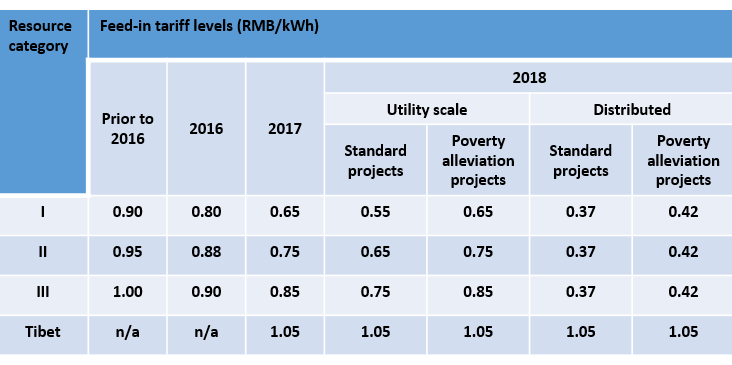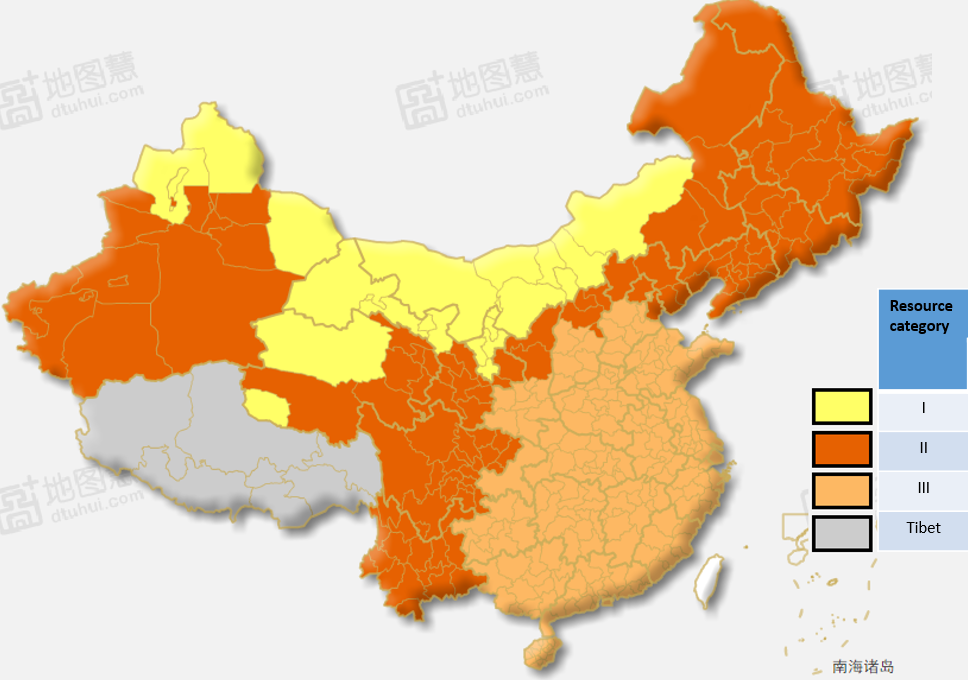All translations on this site are unofficial and provided for reference purpose only.
To view translations, select English under Step 1 (at the right of the screen). Not every item is (fully) translated. If you’re still seeing Chinese, you can use machine translation, under Step 2, to make sense of the rest.
Want to help translate? Switch to English under Step 1, and check ‘edit translation’ (more explanation in the FAQ). Even if you translate just a few lines, this is still very much appreciated! Remember to log in if you would like to be credited for your effort. If you’re unsure where to start translating, please see the list of Most wanted translations.
Circular on 2018 pricing policy for PV power generation projects
Original title: 关于2018年光伏发电项目价格政策的通知(发改价格规〔2017〕2196号)
Links: Source document (in Chinese) (link).
National Development and Reform Commission
Circular on 2018 pricing policy for PV power generation projects
NDRC Price Regulation [2017] No. 2196
To Development and Reform Commissions, Pricing Bureaus, Energy Administrations, and Poverty Alleviation Offices of provinces, autonomous regions and directly-controlled municipalities, the State Grid Corporation, China Southern Power Grid Company, and Inner Mongolia Electric Power Company:
In order to implement the gradual withdrawal of the benchmark feed-in tariff for new and renewable electricity as required by the "Strategic Energy Development Action Plan (2014-2020)" issued by the General Office of the State Council, to reasonable guide renewable energy investment, and to promote the healthy and orderly development of the photovoltaic power generation industry, it has been decided to adjust the 2018 benchmark feed-in tariff pricing policy for electricity from PV power generation
。In agreement with the National Energy Administration, notice is hereby given of the following relevant matters:
1. In accordance with recent technological progress and cost reduction in the PV industry, the benchmark feed-in tariffs for PV power plants put into operation after January 1, 2018 are reduced, to 0.55 RMB, 0.65 RMB, and 0.75 RMB per kilowatt-hour (incl. tax) in class Ⅰ, Ⅱ, Ⅲ resource areas, respectively。From 2019 onwards, PV power generation projects incorporated into the annual development scale receiving financial subsidies will all be granted the benchmark feed-in tariff in accordance with the moment that the project became operational。
2. For distributed photovoltaic power generation projects put into operation after January 1, 2018 and operating on a "use what is generated, with surplus electricity put onto the grid" model, the subsidy standard is reduced by 0.05 RMB for all electricity generated, with the subsidy standard adjusted to 0.37 RMB per kWh (incl. tax)。Distributed photovoltaic power generation projects operating a "all generated electricity is put onto the grid" model shall receive the feed-in tariff applicable to PV power plants in the respective resource category area where the project is located。The share of electricity from distributed photovoltaic power generation projects used for own consumption is exempt from charges on electricity, including the charges for various government funds and surcharges, system reserve capacity fees and other fees related to grid connection services。
3. The benchmark feed-in tariff for village-level PV power stations for poverty alleviation (0.5 MW and below), as well as the subsidy standard for distributed household PV projects for poverty alleviation, remain unchanged。
4. All renewable electricity generation enterprises and power grid enterprises must truthfully and completely record and save information on total power generation, price and subsidy amounts relevant power generation projects, cooperate in supervision and inspection by relevant departments, and submit relevant data to the National Renewable Energy Information Management Center before the 10th of each month。The pricing departments at all levels should strengthen the supervision of the implementation of feed-in tariffs for renewable electricity as well as the settlement of electricity surcharges, and ensure the implementation of policy related to electricity pricing。
5. Local governments are encouraged to, in accordance with the relevant state regulations, carry out pricing reform for local consumption of PV power generation and pilot projects for determining pricing based on tenders, and gradually improve the mechanisms for price discovery through the market。
6. The above stated provisions come into effect on January 1, 2018。
Annex:Table of 2018 National PV feed-in tariffs
National Development and Reform Commission
December 19, 2017
Annex
Table of 2018 National PV feed-in tariffs
Unit:RMB/kWh (including tax)
| Resource category area | Benchmark feed-in tariff for PV power plants | Benchmark feed-in tariff for distributed PV | Resource area includes | ||
| Ordinary power station | Village-level PV power stations for poverty alleviation | Ordinary project | Distributed PV projects for poverty alleviation | ||
| Class I resource area | 0.55 | 0.65 | 0.37 | 0.42 | Ningxia; Qinghai: Haixi; Gansu: Jiayuguan, Wuwei, Zhangye, Jiuquan, Dunhuang, and Jinchang; Xinjiang: Hami, Tacheng, Altay, Karamay; Inner Mongolia: areas other than Chifeng, Tongliao, Xing'an League and Hulunbeier |
| Class II resource area | 0.65 | 0.75 | Beijing; Tianjin; Heilongjiang; Jilin; Liaoning; Sichuan; Yunnan; Inner Mongolia: Chifeng, Tongliao, Xing'an League and Hulunbeier; Hebei: Chengde, Zhangjiakou, Tangshan, and Qinhuangdao; Shanxi: Datong, Shuozhou, Xinzhou, and Yangquan; Shaanxi: Yulin, Yan'an; areas not included in class I resource areas in Xinjiang, Qinghai and Gansu | ||
| Class III resource area | 0.75 | 0.85 | Areas not included in Class I or II resource areas | ||
Note:1. The benchmark feed-in tariff for PV stations in Tibet is 1.05 RMB/kwh。
2. PV power station projects incorporated into the annual development scale receiving financial subsidies after January 1, 2018 will receive the benchmark feed-in tariff for 2018。
3. PV power station projects incorporated into the annual development scale receiving financial subsidies prior to 2018, but which have not been put into operation prior to June 30th, 2018, will receive the benchmark feed-in tariff for 2018。
4. Distributed photovoltaic power generation projects put into operation after January 1, 2018, will receive the subsidy standard listed in the above table。


